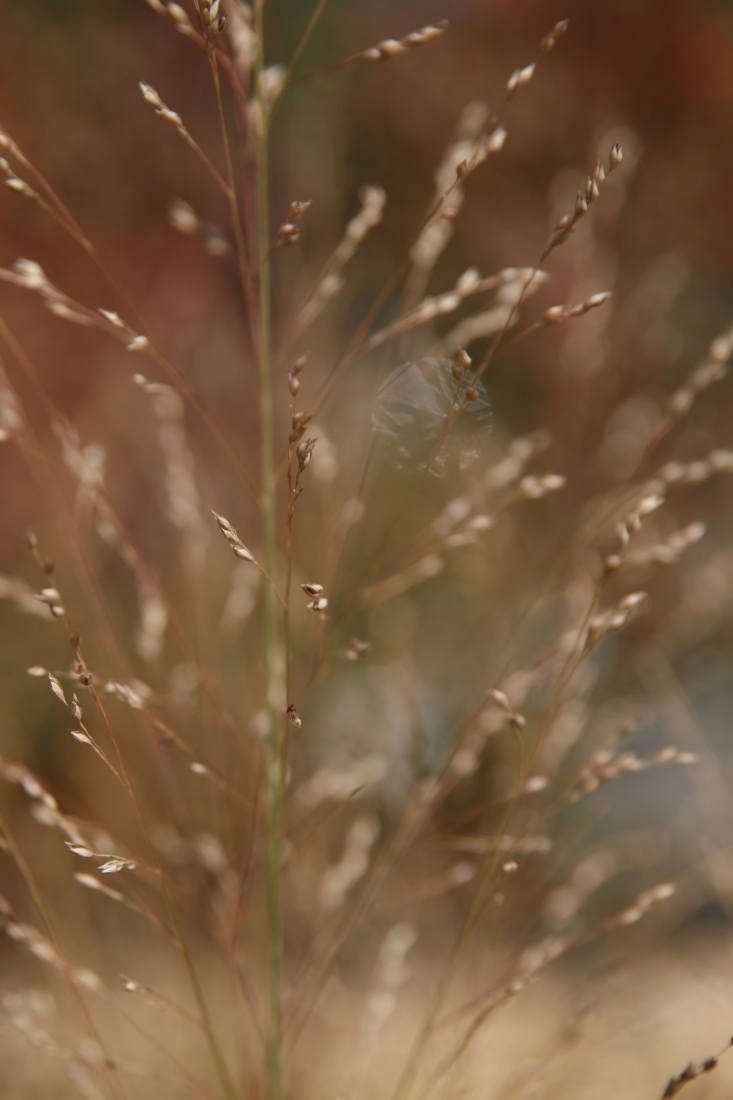Switchgrass, Panicum virgatum: “Tall Panic Grass”
If you are a resident of the East Coast, the much-lamented loss of North America’s tallgrass prairie may be a vague concept. It is almost impossible for those of us not in plains with distant horizons to imagine what 250 million acres of open grassland looked like. It may be even more difficult to visualize the individual plants which inhabited what was once the largest ecosystem in the United States. Unfamiliarity may explain why we still rely a great deal on imported grasses instead of turning to the vigorous, long-rooted native species of the prairie when designing our gardens. Time to change that.
Is switchgrass a good fit for your garden? Read on to learn how and where to plant Panicum virgatum:

The four dominant species in the tallgrass prairie were: little bluestem, big bluestem, Indian grass, and switchgrass. Today all are readily available, dependable, easy to grow, and provide seasonal beauty. However, for adaptability and usefulness, it would be hard to beat switchgrass. In addition to the prairie, Panicum virgatum is found on dry slopes, in pine and oak woodlands, and along river banks. It is also known to thrive in heavy clay, sand, drought-plagued areas, and even in saturated soils such as brackish marshes. In other words, it will grow almost anywhere.

Cheat Sheet
- Switchgrass attracts bees and butterflies and provides protective cover for songbirds, quail, pheasants, and small mammals such as rabbits and chipmunks.
- Use switchgrass in meadows or native plant gardens, or place it in a row for a feathery screen or hedge. Used as a specimen, switchgrass makes an excellent substitute for the non-native Miscanthus.
- Prevent erosion by planting en masse on slopes and ridges.
- Combine switchgrass with flowering natives such as aster, black-eyed Susan, coneflower, gaillardia, and sunflower.
- Switchgrass flowers make attractive additions to fresh or dried arrangements.
- Switchgrass is not appealing to deer.

One of the most valuable traits of Panicum virgatum as a garden plant is its nearly year-round interest. Although, as a warm-season grass, it is slow to start in the spring, after it materializes it keeps embellishing the landscape with an ever-changing color show. From the first fresh appearance of its narrow green or bluish leaves to its mid-summer bloom when the delicate pinkish flowers appear on stalks about a foot above the foliage, it is a subtle but effective accent plant. Fall is the most dramatic season for switchgrass: the foliage turns bright yellow or gold (sometimes tinged with burgundy or red). In winter it fades to a pleasant beige that is considerably enhanced by a snowy landscape.
Keep It Alive
- In addition to being ridiculously tolerant of different kinds of soil, switchgrass helps to restore damaged or contaminated areas (think strip mines).
- Plant in full sun for the most prolific flowering, best fall color, and upright growth.
- Does best in USDA zones 4 to 9.
- Deep roots (as long as 9 feet) mean this plant, once established, is extraordinarily drought tolerant and does not require fertilizer.
- Wait to cut back dried foliage in early spring as seeds provide nutrition for birds during the winter.
- If the centers of clumps die out every few years, dig up, divide, and replant to rejuvenate.
- Large plantings of switchgrass can be revitalized through controlled burns.

Panicum virgatum is a large plant, up to 8 feet high and3 feet wide, but recently developed hybrids are compact and more suited to smaller gardens. ‘Cape Breeze’ is a variety discovered on Martha’s Vineyard that is salt-tolerant, dense and erect with bright green foliage and airy yellow-green blooms. Even in flower, it tops out at 30 inches in both height and spread. Another distinctive short cultivar is ‘Shenandoah’, which is a small vase-shaped plant that turns a striking red-purple color in fall. Like ‘Cape Breeze’, this hybrid gets about 30 inches tall with a similar spread.
Other popular ornamental cultivars include the blue-leaved ‘Cloud Nine’ which can reach 8 feet when in flower and changes color to bright gold in autumn. ‘Dallas Blues’ is somewhat shorter at 6 feet but makes a good specimen plant with its vertical habit and powdery blue foliage that turns copper in the fall. ‘Prairie Fire’ sports bright red foliage in early summer, which later converts into a buttery yellow. This upright plant can reach 5 feet in height.

But switchgrass is not a plant to be strictly classified as ornamental. It has a number of agricultural and commercial uses such as pasture and hay for cattle and sheep. It can be pressed into pellets that are used as fuel, and research is ongoing into its use in the manufacture of a textile fabric that could be a more environment-friendly substitute for cotton. Scientists believe that in the future switchgrass may be used to create a sustainable biofuel that would be far more energy efficient to produce than ethanol, which is made from corn. So enjoy this plant as a decorative accent in your garden, but respect it as a valuable environmental workhorse.
See more growing tips at Switchgrass: A Field Guide to Planting, Care & Design and more posts in our Grasses 101 guides and read more about adding elements of the prairie to your garden:
- Blue Grama Grass: A Field Guide to Planting, Care & Design
- 10 Ideas to Steal from Prairie-Style Gardens
- Gardening 101: Black-Eyed Susans








Have a Question or Comment About This Post?
Join the conversation